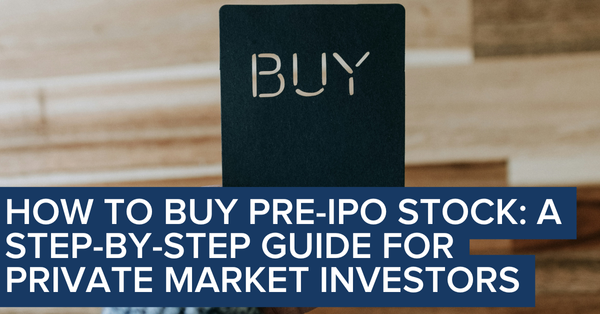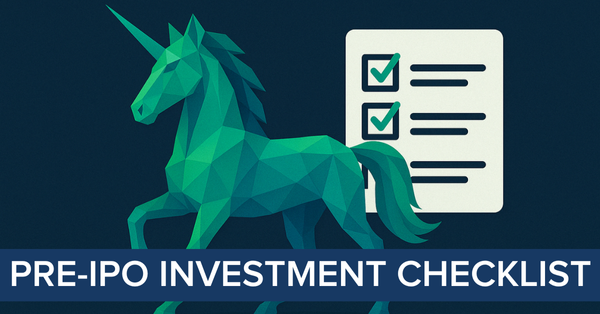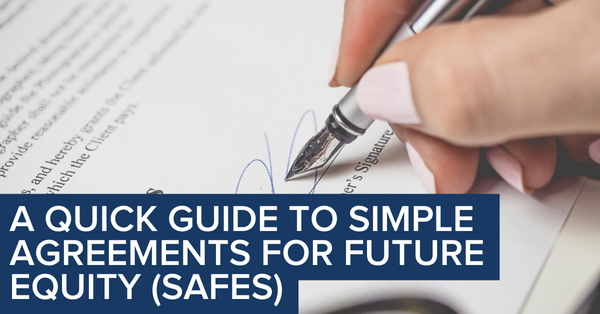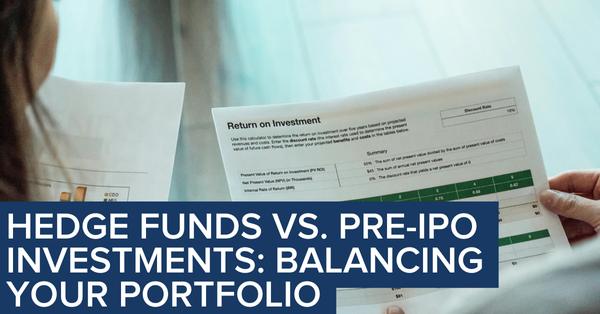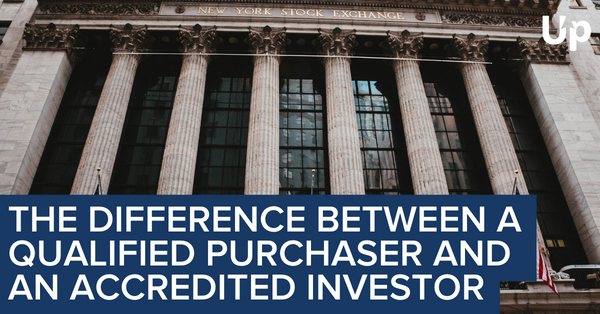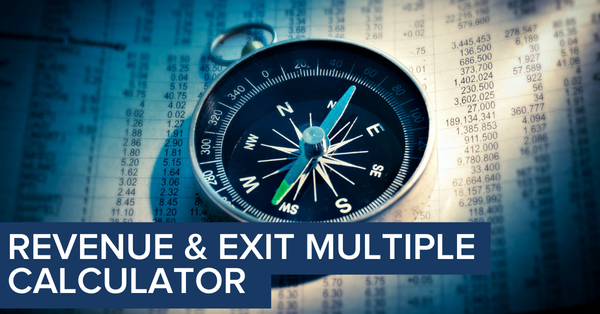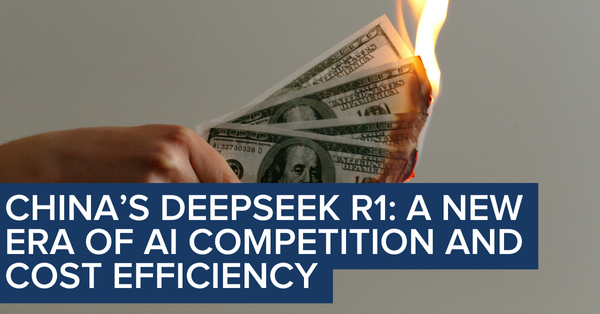Private Market Investment Term Glossary
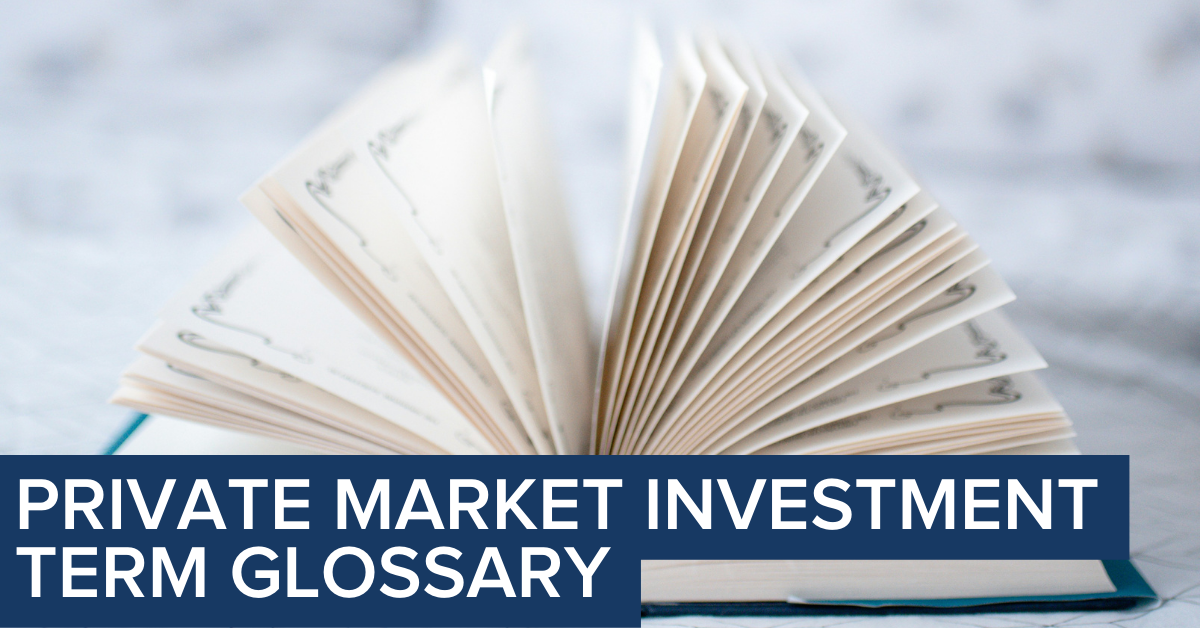
At UpMarket, our mission is to increase access to private markets for individual investors, enabling them to participate in high-potential opportunities traditionally reserved for ultra-wealthy, connected, and institutional investors.
The Private Market Investment Term Glossary is designed to be an essential tool to educate UpMarket clients about common private-market terminology and concepts critical to understanding alternative investments. By providing clear and concise definitions of key terms, we hope to empower investors like you to make more informed decisions so you have the confidence to invest in alternative assets such as pre-IPOs, hedge funds, real estate, and venture capital.
Private Market Investment Term Full Glossary:
Accredited Investor: An individual or entity that meets specific financial criteria to invest in unregistered and other private-market securities offering. These investors are also sometimes called high-net-worth investors. A qualified purchaser is a higher level of qualification that provides even greater access.
Alternative Investments: Financial assets that fall outside traditional investment categories like stocks, bonds, or cash.
American-Style Waterfall: A distribution method in private equity where profits are distributed on a deal-by-deal basis, allowing general partners to receive incentives earlier.
Anchor Investor: A major investor in a fund, often securing preferential terms and influencing other investors to participate.
Bridge Financing: Temporary financing that is used until a long-term solution is found or the next stage of funding is obtained.
Buy-and-Build Strategy: A private equity strategy involving the acquisition of a platform company followed by additional complementary acquisitions with the aim of increasing the larger firm’s value.
CAGR (Compound Annual Growth Rate): The mean annual growth rate of an investment over a specified period longer than one year.
Capital Call: A request by a fund's general partner for the committed capital from investors to be transferred for investment purposes. For example, an investor may commit to investing $100,000 in an offering but only $50,000 is called initially. Later, additional capital calls can be made to bring the total investment amount to the original commitment amount.
Cap Rate: The ratio of net operating income to the property asset value used to estimate the return on investment in real estate. Cap ratio is typically calculated by dividing a property's net operating income (NOI) by its current market value and multiplying by 100
Carried Interest: The share of profits that general partners earn as a performance fee, typically after achieving a hurdle rate. This is sometimes referred to as “carry” which represents investment profits the manager or General Partner is entitled to if a given offering they are sponsoring does well. You can use UpMarket's Fee Calculator to determine fees and returns net of fees for a given investment.
Catch-Up Tranche: A stage in a distribution waterfall where general partners receive a higher percentage of profits after limited partners achieve their preferred return. This stage typically occurs after the fund manager has returned the contributed capital to Limited Partners (LPs) and the LPs have received their preferred return. During the catch-up phase, the general partner may receive 100% of the profits until they "catch up" to a predetermined share of the profits. The aim of this provision is to ensure that the general partner's incentives are aligned with the overall performance of the fund.
Closed-End Fund: A type of collective investment model with a fixed number of shares that are issued during an initial offering and are not redeemable from the fund. Instead of being bought and sold directly from the fund, these shares are traded on the open market, such as a stock exchange, at market prices that may differ from the fund's underlying net asset value (NAV). This means there can be distortions between the trading price and the underlying asset valuation in the closed-end fund.
Closed Fund: A fund that is no longer accepting new investments. For example, a fund may be soliciting investors for a set period of time or until a certain amount of capital is raised; once that date passes or sufficient capital is raised, the fund will close.
Co-investment: A minority investment made alongside a private equity or venture capital fund or other lead investor in a specific portfolio company. This type of investment allows investors to participate directly in the equity ownership of the company, typically on the same terms as the lead investor, but without having to pay the management fees or carried interest typically associated with fund investments, e.g., 2/20 fees.
Committed Capital: The total amount of capital pledged by investors to a fund.
Commitment Period: The timeframe during which a fund can call committed capital from investors.
Deal Flow: The rate at which investment opportunities are presented to investors. Also commonly referred to in the context of the number of deals a fund manager looks at over a given period of time.
Deployment Period: The period during which the fund is actively making investments.
Distressed Debt: Debt securities of companies in financial distress, often purchased at a discount with the potential for significant returns.
DPI (Distributions to Paid-In Capital): A ratio that measures the capital returned to investors relative to the capital they contributed.
Drawdown: See capital call. The actual transfer of funds from investors to the fund for investment purposes, typically in response to a capital call issued by the fund manager. This process occurs when the fund manager identifies an investment opportunity and needs to allocate the committed capital from investors to finance the investment.
Dry Powder: Capital that has been committed to a fund but is not yet invested, ready for deployment. Speaking more broadly, dry powder is often referred to in the context of how much cash is available to be deployed into a given investment or asset class.
Due Diligence: The comprehensive appraisal of an investment opportunity to evaluate its risks and potential returns. This process involves a thorough examination of financial records, legal matters, market conditions, and operational aspects of the investment target to ensure that all relevant information is considered before making an investment decision. Due diligence (DD) should include both quantitative and qualitative factors, e.g., looking at financials but also speaking to both current and former employees, vendors, and other parties that have close knowledge of the investment or fund management.
Evergreen Fund: An investment fund with no fixed end date, continuously reinvesting capital from exited investments.
Exit Strategy: A planned approach to liquidating a position in an asset or disposing of tangible business assets.
Fees: Fees charged related to private-market investments. Typically, they include a subscription fee that is paid at the initiation of the investment, an ongoing annual management fee, and some investments may charge carried interest or other incentive fees that are paid out as a percentage of profits (typically 20%) if the investment performs well. You can use UpMarket's Fee Calculator to determine fees and returns net of fees for a given investment.
Follow-on Investment: Additional investment in a portfolio company after the initial investment. This type of investment is typically made to support the company's growth, fund new projects, or address unforeseen financial needs. Follow-on investments are common in private equity and venture capital, where investors may continue to support successful companies throughout their development stages. For example, a venture fund may invest in a company’s seed round and invest again in successive rounds like the company’s Series A and B rounds.
Fund of Funds: An investment strategy of holding a portfolio of other investment funds rather than investing directly in securities.
Fund Term: The lifespan of a fund, typically ranging from 7 to 10 years, including the investment and divestment periods. he investment period usually lasts for the first few years, during which the fund actively seeks and makes investments. The remaining years are focused on managing and eventually divesting those investments to return capital and profits to the investors. Extensions to the fund term can sometimes be granted to allow for the full realization of investments. Some managers refer to this as the investment and harvesting stages.
Gate (Redemption Gate): A mechanism that limits the amount of capital that can be withdrawn from a fund during a given period.
GP (General Partner): The entity responsible for managing a private equity fund, making investment decisions, and operating the fund. Sometimes a GP is referred to as a “Sponsor” as they are sponsoring or bringing a deal to limited partners (LPs) to invest in.
Gross IRR (Internal Rate of Return): The return on investment before deducting fees and carried interest. IRR is a favored return metric because it looks at the performance of the investment in relation to its hold time. This is important because an investment that doubles in a short period of time is much more valuable than one that takes decades to double. This metric measures the profitability of an investment by calculating the annualized rate of return based on the investment's cash flows. Gross IRR provides an indication of the investment's performance without accounting for the costs associated with managing the fund.
Gross MOIC (Multiple on Invested Capital): A metric representing the total value of investments divided by the total amount of invested capital before fees.
Holding Period: The duration for which an investment is held before being sold or disposed of.
Hurdle Rate: The minimum rate of return that a fund must achieve before it can charge performance fees. This benchmark ensures that fund managers only earn performance fees if they generate returns that exceed this predefined threshold, aligning their interests with those of the investors. For example, to earn carried interest, some managers must beat an index, like the S&P 500, before they earn additional fee income.
Illiquidity Premium: The additional return expected by investors for holding assets that are not easily converted to cash. Theoretically, this premium compensates investors for the higher risk and inconvenience associated with the reduced liquidity of these assets, as they may require a longer time to sell or may only be sold at a discount.
Institutional Investor: Large organizations such as pension funds, endowments, and insurance companies that invest substantial amounts of capital.
Interval Fund: A type of closed-end fund that periodically offers to repurchase its shares from shareholders at net asset value (NAV). Unlike traditional closed-end funds, interval funds provide limited liquidity to investors by making periodic repurchase offers, typically every three, six, or twelve months. This structure allows investors some liquidity while still enabling the fund to invest in less liquid assets.
IPO (Initial Public Offering): The process by which a private company offers shares to the public for the first time. This event marks the company's transition from a privately held entity to a publicly traded one, allowing it to raise capital from public investors. The IPO process typically involves underwriting by investment banks, regulatory approvals, and the establishment of a market for the company's shares on a stock exchange.
IRR (Internal Rate of Return): The discount rate that makes the net present value (NPV) of all cash flows from a particular project or investment equal to zero. It is a measure of the profitability and efficiency of an investment, representing the annualized rate of return at which the present value of the investment's inflows equals the present value of its outflows. IRR is commonly used in capital budgeting and investment analysis to compare the attractiveness of different projects or investments. You can use UpMarket's calculator to determine fees and gross/net investment IRR.
ITD (Inception-to-Date): A measure of a fund’s performance from the time of its inception to the current date. This metric provides an overview of how the fund has performed over its entire lifespan, capturing all gains, losses, and income generated since it began operations. ITD performance is often used to assess the long-term effectiveness and consistency of the fund's management. Please note that this return metric can be gross or net of fees.
J-Curve: The initial dip in the value of a private equity fund's investments, followed by a rise as the investments mature and gain value. This pattern is typical in private equity funds, where early-stage costs, fees, and underperforming investments can cause negative returns initially. Over time, as the portfolio companies grow and generate returns, the fund's value typically increases, creating a J-shaped curve when plotted over time.
Key Person Risk: The potential negative impact on a fund if a key individual departs or is unable to fulfill their role. For example, if one trader is responsible for the majority of the returns for a given investment fund, their departure would present a significant risk that the fund may be unable to deliver similar historical returns going forward.
LPA (Limited Partnership Agreement): The governing document that outlines the terms and conditions of a private equity fund. This agreement details the rights and responsibilities of the limited partners (investors) and the general partner (fund manager), including provisions related to capital contributions, distributions, management fees, carried interest, investment strategies, and fund governance. The LPA serves as the foundational legal contract that dictates how the fund operates and protects the interests of all parties involved. This document is extremely important and should be reviewed carefully before entering into any investment.
Liquidity: The ease with which an asset can be converted into cash without affecting its market price. To illustrate, selling illiquid investments may result in drastic price declines, so understanding liquidity in any given investment is critical.
Lock-up Period: A time during which investors are not allowed to sell their shares in a fund.
Loss Ratio: The proportion of investments within a portfolio that result in a loss. This metric is used to assess the risk and performance of an investment strategy by indicating the percentage of investments that did not achieve positive returns. A high loss ratio may suggest a riskier or less effective investment approach.
LP (Limited Partner): Investors in funds who provide the capital and have limited liability. Limited partners contribute funds to the private investments but do not participate in the fund's management. Their liability is limited to the amount of their investment, protecting them from potential losses beyond their capital commitment. Limited partners typically include institutional investors, such as pension funds, endowments, and high-net-worth individuals that invest through platforms like UpMarket.
LTM (Last Twelve Months): A financial measure that refers to the performance of a company over the past twelve months.
Management Fee: The fee paid to the fund manager for managing the fund's assets, typically calculated as a percentage of the fund's total assets or committed capital. This fee compensates the manager for their time, expertise, and operational expenses associated with overseeing the fund's investments. Management fees are usually charged annually and are a standard component of the fund's operating expenses. For example, in some funds/SPVs you’ll see a 2% / 20% structure which means there’s a 2% annual management fee charged on all assets managed along with a 20% carried interest fee for all profits created as a result of fund management. You can use UpMarket's Fee Calculator to determine fees and returns net of fees for a given investment.
Mezzanine: A hybrid of debt and equity financing that gives the lender the right to convert to an equity interest in the company in case of default.
Modified Internal Rate of Return (MIRR): A measure of financial performance that aims to provide a more accurate reflection of an investment’s profitability by adjusting for the cost of capital and the reinvestment rate of cash flows. Unlike the traditional Internal Rate of Return (IRR), MIRR assumes that positive cash flows are reinvested at the firm’s reinvestment rate, and initial outlays are financed at the firm's cost of capital. This adjustment provides a more realistic assessment of an investment's performance and potential returns.
NAV (Net Asset Value): The total value of a fund's assets minus its liabilities, often expressed on a per-share basis.
Net IRR (Internal Rate of Return): The return on investment after deducting all fees and carried interest.
Net MOIC: A metric representing the total value of investments divided by the total amount of invested capital after fees.
Net Return: The return on an investment after all expenses, taxes, and fees have been deducted.
No-Fault Dissolution: A clause in a fund's governing documents that allows investors to terminate the fund early with a supermajority vote, typically without needing to prove any fault or wrongdoing by the fund manager. This provision provides a mechanism for investors to end the fund's operations if they collectively decide it is in their best interest.
No Fault Termination: A provision that allows for the early termination of a fund’s investment period without requiring cause or demonstrating any fault by the fund manager. This clause typically requires a supermajority vote by the investors and provides a way to cease new investments and potentially liquidate the fund's assets if the investors believe it is in their best interest.
Pari Passu: A legal term indicating that two or more assets, securities, creditors, or obligations are equally ranked and have the same rights of payment and priority. In the context of investments and finance, it means that these entities or instruments will be treated equally without any preference over each other in terms of claims on assets or income. Put more simply, they would be on equal footing in the event of bankruptcy or similar events.
PIC Multiple: The ratio of paid-in capital to committed capital, indicating the percentage of the total committed capital that has been drawn down and invested by the fund. This metric helps investors understand how much of their committed capital has been utilized by the fund manager for investments and expenses.
Placement Agent: A firm or individual hired to raise capital for a fund from investors.
Portfolio Company: A company in which a venture or private equity fund has invested. For example, many VC funds like to market their top-performing portfolio company investments, e.g., “We were early investors in Google, Stripe, and Databricks.”
Preferred Return / Pref / Hurdle Rate: The minimum return that limited partners must receive before the general partner can start receiving carried interest.
Preferred Shares: A class of ownership in a corporation that has a higher claim on assets and earnings than common shares. Preferred shareholders typically receive dividends before common shareholders and have priority in the event of liquidation. Preferred shares may also have features such as fixed dividend rates, convertibility into common shares, and the ability to be redeemed by the issuing corporation under certain conditions.
Primaries / Primary Investments: Initial investments made directly into companies, typically in the form of equity or debt. These investments are usually made during the early stages of a company's development, such as during seed, venture, or growth capital funding rounds. Primary investments provide the company with capital needed for expansion, operations, or other business activities and often involve acquiring newly issued securities directly from the company. When you see announcements about a company raising capital in seed, Series A, B, C, etc., rounds, those are typically primary round investments.
Private Credit: Loans and other types of credit provided by non-bank entities to private companies.
Private Equity: Equity investments in companies that are not listed on public stock exchanges. This would include venture capital investments as well.
Private Markets: Investments in equity and debt instruments of private companies that are not publicly traded on stock exchanges. These markets include private equity, venture capital, private debt, and other forms of direct investment in privately held businesses. Investors in private markets typically seek higher returns in exchange for accepting lower liquidity and higher risk compared to public market investments.
PPM (Private Placement Memorandum): A comprehensive document provided to potential investors that details the investment opportunity, including its objectives, strategies, risks, terms, and conditions. The PPM is used in private offerings to inform and protect investors by providing all necessary information to make an informed investment decision. It typically includes details about the company, the management team, financial statements, the use of proceeds, and the legal structure of the investment. This document is important and should be carefully reviewed before making an investment.
Qualified Purchaser: A qualified purchaser is also an individual or entity that meets certain financial requirements, but these requirements are more stringent than those for accredited investors. The term "qualified purchaser" is defined in Section 2(a)(51) of the Investment Company Act of 1940. To be considered a qualified purchaser, an individual must have at least $5 million in investments, while an entity must have at least $25 million in investments.
Real Assets: Physical or tangible assets such as real estate, infrastructure, and commodities. These assets have intrinsic value due to their physical properties and can provide a hedge against inflation. Real assets often generate income through rent, usage fees, or commodity production and can be less correlated with traditional financial assets like stocks and bonds.
Redemption: The process by which investors can withdraw their capital from a private equity fund, typically subject to specific terms and conditions outlined in the fund's governing documents. This may include redemption gates, lock-up periods, and advance notice requirements. Redemption allows investors to receive a portion or all of their invested capital, often at the discretion of the fund manager and based on the fund's liquidity.
Residual Value to Paid-In Capital (RVPI): The current value of a fund’s unrealized investments as a percentage of called capital.
Right of First Refusal (ROFR): is a contractual right that gives existing shareholders or the company the opportunity to purchase shares being sold by another shareholder before those shares are offered to outside parties. This right is commonly included in the shareholder agreements of private startup companies to maintain control over ownership and ensure shares remain within the existing investor group. Typically, under this process, when a shareholder decides to sell, they must notify the company and existing shareholders of the proposed sale terms. The existing shareholders or the company typically have a set period (e.g., 30 days) to match the offer. If the ROFR is exercised, the sale proceeds under the offered terms; if not, the selling shareholder may complete the sale with a third party under the same conditions. The ROFR helps maintain ownership control but may affect the liquidity and appeal of shares to outside investors.
Secondaries / Secondary Investments: The purchase of existing private equity interests from current investors rather than investing directly in a company. This involves acquiring stakes in private equity or venture funds or direct investments in private companies from other investors who wish to sell their holdings before the fund's maturity. Secondary investments provide liquidity to the original investors and allow new investors to gain exposure to private equity assets with a shorter time horizon to realization.
Senior Debt: Debt that takes precedence over other unsecured or subordinated debt.
Side Letter: An agreement between a fund and an investor that provides the investor with special terms or conditions not offered to other investors. These agreements can address various aspects, such as fee structures, reporting requirements, or redemption terms, and are typically used to accommodate specific needs or preferences of the investor while maintaining the overall structure of the fund.
Soft Cap: The target amount a fund aims to raise, which can be exceeded if there is strong demand.
Special Purpose Vehicle (SPV): A subsidiary created for a specific, limited purpose, often used to isolate financial risk. SPVs are separate legal entities established to undertake a particular project or transaction, protecting the parent company from financial exposure and risk associated with that activity. They are commonly used in structured finance, securitization, and to hold specific assets or liabilities off the parent company's balance sheet.
Special Situations: Investments in distressed companies or other unique opportunities that require active management.
Sponsor: The entity responsible for raising a private equity fund and managing its investments. The sponsor typically includes the fund's general partner or management team, who are tasked with sourcing investment opportunities, conducting due diligence, making investment decisions, and overseeing the portfolio's performance. The sponsor also plays a crucial role in attracting investors and securing capital commitments for the fund.
Subscription Document (Sub Doc): The legal document that investors must complete to participate in a private fund. This document includes detailed information about the investor, their commitment to the fund, and their acknowledgment of the fund's terms and conditions. By signing the subscription document, the investor agrees to the fund's governing documents and commits to providing the capital specified. The sub-doc also typically requires investors to provide representations and warranties regarding their financial status and investment experience, e.g., I am an accredited investor with knowledge of this type of investment I am making.
Subscription Fee: A fee charged to investors when they subscribe or make their initial investment into a private equity fund. This fee is typically used to cover the administrative and legal costs associated with processing new investments and onboarding investors. It may be a one-time fee or structured as a percentage of the investor's committed capital. Typically, this will be a percentage of the total investment amount ranging from 1-6% of the investment, often on the lower end of that range. You can use UpMarket's Fee Calculator to determine fees and returns net of fees for a given investment.
Syndication: The process of involving multiple investors in a single investment, typically to pool resources and share the risk and returns. This approach is common in large-scale investments, such as real estate projects, private equity deals, and venture capital funding rounds, where the investment size might be too substantial for a single investor. Syndication allows for diversification of risk and access to a broader range of expertise and capital.
Target Fund: The fund into which a fund of funds invests.
Time Horizon: The period over which an investment is expected to be held before being liquidated.
Top Quartile: Refers to the performance of funds that rank in the top 25% based on returns.
Total Value to Paid-In Capital (TVPI): A measure of a fund’s performance, calculated as the sum of the residual value and distributions divided by paid-in capital.
Underwriting: The process of evaluating and assuming the risk of a financial transaction, typically used in the context of initial public offerings (IPOs) and insurance. In the context of IPOs, underwriters, usually investment banks, assess the value of a company, set the initial offering price, and may buy the shares from the issuer to sell to the public. In insurance, underwriters evaluate the risk of insuring a person or asset and determine the appropriate premium to charge for coverage.
Unfunded Commitment: The portion of committed capital that has not yet been called by the fund.
Venture Capital: Equity financing provided to startups and small businesses with high growth potential. Venture capital firms or investors supply the capital in exchange for equity ownership, often taking an active role in the company's management and strategic direction, sometimes in the form of board of director’s seats. This type of financing is crucial for early-stage companies that may not have access to traditional funding sources, such as bank loans, due to their higher risk profile.
Vintage Diversification: The strategy of investing in funds launched in different years to reduce risk.
Vintage Year: The year in which a private equity fund makes its first investment or draws down capital from its investors. This year serves as a reference point for comparing the performance of funds and investments over time, as it indicates the starting period of the fund's investment activities. The vintage year is important for benchmarking purposes and understanding the economic and market conditions prevailing at the time the investments were made.
Workout: A restructuring process undertaken by a company or its creditors to renegotiate the terms of its debt obligations. The goal of a workout is to avoid default or bankruptcy by finding a mutually agreeable solution that allows the company to manage its debt more effectively. This process may involve modifying the interest rates, extending the maturity dates, reducing the principal amount owed, or making other adjustments to the original loan agreements. Workouts are typically used in situations where the company is experiencing financial distress, but they are still considered viable.
Write-Down: A reduction in the book value of an asset due to impairment or loss.
YTD (Year-to-Date): A period starting from the beginning of the current year and ending at the current date.
We hope this glossary is helpful; if you want to see new terms added, contact us and ask!
Disclaimer: 1) The document only contains summary information of the fund and the investment opportunities that the fund potentially provides. The document has its limitations and should be read together with the fund documents before consideration of an investment, to include the risk factors and potential conflicts of interest specified in the fund's documents. This document should not be used as the sole basis for deciding whether to invest in a fund. Any fund investment should be made through a formal confidential private placement memorandum and other fund documents. Potential investors should read the risk factors in the private placement memorandum of securities issuance. Potential investors may choose if necessary to consult with their own professional advisers, and receive advice on any investment, legal, tax or accounting issues related to fund investments.
2) Investments possess risk, to include the loss of principal. The dividends and potential earnings described in this document are expected revenues and are not guaranteed. This document contains "forward-looking statements." These statements are based on our current beliefs and expectations and are subject to significant risks and uncertainties. Past performance is not indicative of future performance.
3) The source and data of the material are considered to be reliable. However, there is no guarantee of its accuracy or completeness. The Company has no obligation to disclose or revise or modify this statement or any forward-looking statements as the circumstances change or as a result of subsequent events. Any statement in this document regarding the Partner does not mean that the Partner agrees and approves any content of the document. The information contained herein is strictly confidential and is intended for use by the recipient only and may not be reproduced, forwarded or shared without consent.
4) The information contained within this document is not investment advice and does not constitute a recommendation to buy or sell any securities, but is for informational purposes only. Any fund investment should be conducted through a formal confidential private placement memorandum and other fund documents. Potential investors should carefully read the risk factors in the private placement memorandum of securities issuance, and consult their own professional advisers, and receive advice on any investment, legal, tax or accounting issues related to fund investments.
5) The United States domestic sales of the fund's interests are exempt under Regulation D of the U.S. Securities Act of 1933; and are only applicable to potential investors who are eligible for "qualified investors" under Regulation D. Sales outside the United States are exempt under Regulation S of the U.S. Securities Act of 1933. In any jurisdiction, if it is not allowed to sell or solicit equity in the jurisdiction, or if such conduct is illegal in that jurisdiction, no fund equity offerings may be conducted in that jurisdiction.
6) Any securities described in the information contained herein are not recommended, approved or disapproved by the U.S. Securities and Exchange Commission or any state regulatory agency. Nor does the aforementioned authorities have any judgment as to the accuracy or adequacy of the information contained in this document. Private equity funds are sold through Upmarket Securities LLC. Upmarket Securities LLC is a U.S. registered broker-dealer, member of FINRA.
About UpMarket
UpMarket's mission is to unlock the private markets for individual investors.
We provide access to a range of asset classes and investment strategies that span private equity, hedge funds, crypto, real estate, and other alternative assets.
The problem
- A large barrier to entry due to high investment minimums
- Time-intensive because sourcing deals is a lot of work even if you’ve got a great network, and
- Costly because of investment-related diligence costs, paperwork, and legal fees
The solution
- Offering lower investment minimums
- Sourcing and conducting diligence on opportunities for investors, empowering them to pick and choose from pre-screened opportunities
- Making the investment process entirely digital, straightforward, and easy to manage from a single portal


